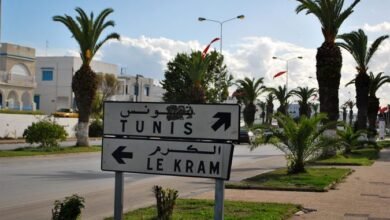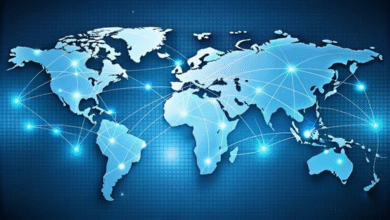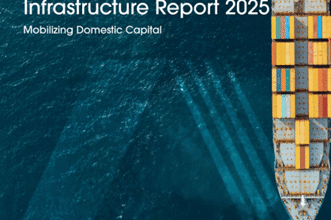AfCFTA, the false start on a differentiated trade?
The African Continental Free Trade Area (AfCFTA) is gradually taking shape. , The Digital Summit for the 13th Extraordinary Session of the Assembly of the African Union, held in early December, was supposed to give it a boost. On January 1, 2021, member states decide to launch commercial activities. What about modalities and handicaps?
By Daouda MBaye
Signed by almost all African states, with the exception of Eritrea, but not yet ratified by all (34 at most), the African Continental Free Trade Area (AfCFTA) does not arouse the same enthusiasm everywhere . In recent weeks, the tenors of the continent have tried to revitalize the mechanics. On December 5, it was through the 13th Extraordinary Session of the Assembly of the African Union on the African Continental Free Trade Area (AfCFTA), through a virtual meeting, chaired by Cyril Ramaphosa, President of South Africa and President of the African Union (AU), that the Heads of State and Government of the African Union stressed the urgent need for Member States to launch trade activities, within this framework. In accordance with the starting schedule, on New Year’s Day, The Afro Champions Initiative launched the foundations of the Creation of one African Market …
Wishes for a new era
Very quickly, the satisfaction fell. It is as if this AfCFTA came at the right time. For the World Bank, the agreement can boost growth and reduce poverty, expand economic inclusion in Africa. It expects $ 76 billion in additional revenue for the rest of the world. Other Bretton Woods institutions will follow suit … In texts, mission and objectives, in particular to accelerate intra-African trade – currently at insignificant levels of – 3% in places – and to strengthen the commercial position of Africa in the global market, attract the 1.2 billion consumers who compose it. Africa has always had weak internal trade. In 2017, intra-African exports represented 16.6% of total exports, compared to 68% in Europe and 59% in Asia. Precisely, a large number of observers find that doubling intra-African trade, thus strengthening Africa’s common voice and its room for maneuver in global trade negotiations, nevertheless remains a pipe dream. As proof: the Agreement aims for a continental customs union, the elimination of customs duties on 90% of intra-African goods, help the movement of capital and people between countries, facilitate external investments, and reduce barriers. non-tariff, but also the time for goods to go through customs … Faced with carriers blocked at the borders, with confiscated trucks and vehicles, burnt or vandalized goods … police harassment every 10 km, in the countries crossed…
In addition, to the euphoric, it is useful to recall that January 1, 2021 marked only the beginning of the negotiations of the AfCFTA, in order to consider the adoption of legal instruments that will facilitate its operation.
According to President Cyril Ramaphosa “Today, we are at the dawn of a new era in the progress of our continent. The moment that we have all worked so hard has finally arrived… We are all filled with a great sense of pride in how far we have come to reach this moment ”. Indeed, the road has been long, since the Monrovia Strategy in 1979, followed by the Lagos Action Plan in 1980, the Abuja Treaty in 1991 establishing the African Economic Community, passing through the signature in March 2018 in Kigali. of the Agreement Establishing the AfCFTA (44 countries signed the Agreement), subsequent decisions and declarations adopted. The unity, which the heads of state congratulated themselves on reaching this point, will it hold up for a long time during the negotiations, given the different levels of economic development and various strategic priorities? Indeed, the sole will of an Africa, determined to take charge of its own destiny, will not be enough.
Infrastructural and industrial concerns
Among the continent’s flaws, economies at differentiated levels of development, a plethora of informal workers, stammering industrialization, degrees of corruption and misappropriation that regularly feed the chronicles … The most optimistic hypotheses rely on inter-African trade ahead boost industrialization and competitiveness, and promote job creation and free up regional value chains … But also, the attractiveness of the continent and the promotion of the empowerment of African women and sufficient support for SMEs , VSEs and young talents, by improving their access to business opportunities. They blithely obscure how to get there.
The Ghanaian Wamkele Mene, Secretary General of the AfCFTA, whose country hosts the headquarters of the Secretariat of the AfCFTA in Accra, perceives the same difficulties. He said recently that integrating 55 markets will not be easy. He recalled that today, 54 countries signed the agreement while 34 countries deposited their instruments of ratification, and 41 countries / customs unions submitted their tariff offers, including EAC and ECOWAS.
The lessons of Brexit
Brexit, which was ratified on the birth day of the AfCFTA, has obviously not shaken the defenders of what should be called the largest free trade area in terms of member states, since development of the World Trade Organization.
While the AfCFTA will be a market of 1.2 billion people and a combined GDP of $ 3 trillion, it will face a number of obstacles in practice, such as a lack of modern and efficient infrastructure, a mercantilism with very subtle protectionist hints to erect non-tariff barriers (national quality standards, phytosanitary conditions, etc.). According to Christian Knebel, Economic Affairs Officer at the United Nations Conference on Trade and Development (UNCTAD), non-tariff barriers will make or break the AfCFTA. Analysts believe the panacea would come from appendix 2 of the annex on non-tariff barriers which outlines mandatory processes and timelines. To this must be added the safeguard measures that certain States will not hesitate to brandish.
Daouda MBaye







